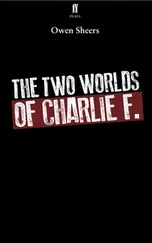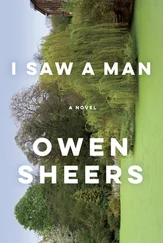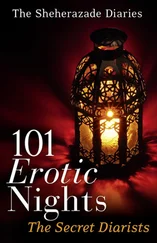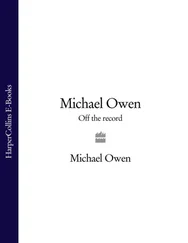But even then, when war was gathering Europe in its fist, he’d still been surprised when it drew the colonies in too; when the guns fired at the battle of Tanga, sounding the note that war had arrived in Africa despite both the British and German governors’ reluctance to enter the arguments of their parent nations. And that was when the recruiting began. The farmers and their sons went eagerly enough. The English and the Dutch around Enkeldoorn, whose countries had so recently been fighting each other, displayed a particularly natural talent for mobilisation, for the transition from civilian to soldier. Gradually, the area became emasculated. Parties of men set off for Nairobi to offer their services to the king. Cullen Gouldsbury, feeling the duty of his youth, had already joined the KAR, and after Tanga most of the other Enkeldoorn officials followed his example.
Unlike so much else in the country, colour was no longer a barrier to entry. The Matabele who lived around some of Arthur’s outlying mission stations were soon taken into training, their warrior past qualifying them as a ‘martial race’ on the clipboard forms held under the arms of the upright recruiting officers. But the war needed men for more than just fighting, and soon the Shona men who Arthur lived and worked among began leaving their homes too, not for the regiments of the KAR but for the carrier corps. They often took their families with them and it was then, when so many Africans were leaving for war, that the decision about what he should do had risen to the forefront of his mind.
Initially, the recruiting of Africans into both the KAR and the carrier corps had simply evoked his now familiar sense of moral exasperation with the colonial government. Since the first days of their presence they had treated the African as a child. A child they could put to work, but still an infant, intellectually and socially. And the analogy was not purely metaphorical; many settlers still accepted the ‘medical evidence’ that proved an African’s brain ceased to develop past the age of fourteen. It was an anthropological perspective he had struggled against throughout his tour in Mashonaland and now it was further distorted by the administration’s decision to recruit Africans. Though regarded as a child, the African was suddenly honoured with the responsibility of a man. The right to kill and be killed.
However much this paradox outraged him the fact remained that the war was a reality and it would spill African as well as European blood. Black hands would fight, carry, cook, clean, wash, push and pull. War had spread its shadow across the races of the world as it had across its countries. Native Africans along with the other empire races were caught in its darkness and as long as they were he felt he should be too. He knew how the Africans would exist within the British Army. As they had done under all British administration, multitudinous in body and non-existent in voice. Someone had to speak for them. And so, despite his long-held pacifism, he eventually went to war, and for largely the same reasons he had first come to Africa. To lessen the impact of European affairs on the natives of the country. Another disease had been imported by the settlers and he hoped his presence might provide some protection against its symptoms of Honour, Might and Majesty and its lasting scar of loss.
Fortune has left him, tutting and, he thinks, probably shaking her head because he did not drink as much as she wanted him to. He senses her body, momentarily covering the light of the door, of the day, then passing on through, opening a warm ray of sunlight again.
He reaches his hand in front of his face and finds the beams, imagines the universes of dust orbiting in them. Cupping his hand slightly, he follows the light, as if it were a rail supporting him, until it comes to rest against the stone wall of his hut. Here, he flattens his hand against the surface; feels the pock-marked rock and the smooth, dry mud paste. The ridges and the valleys of the stone.
♦
Having made his decision, he’d found the practical implications of leaving these stones, his mission work in Mashonaland, an equally hard dilemma to bear. Just a year earlier he had established his own mission station here, ten miles north of Enkeldoorn. It stood on one of four farms he’d bought with the aid of a government grant, the royalties from his books and a trust fund his brother William had tried his best to keep him away from.
The mission took its name from that he had given the whole area: Maronda Mashanu, the Saint of the Five Wounds. Although it was eleven years since his arrival in Africa, the purchase of the farms and the establishment of this station felt like a true beginning for him, as if the previous time in the country had been a false start. In moving to his own mission station, on his own land, he felt the potential of his work, the purpose of his living in Africa might finally be reached. Free of Charter government native land law and the restrictions of the Anglican Church, an era of self-sufficiency, both spiritually and materially, was close at hand.
Many families who had lived with him at Wreningham followed him to Maronda Mashanu. Two local headmen, Mashonganyika and Pfumojeni, chose to move their kraals from the Manyeni reserve to his farms and more families came in their wake, persuaded by their headmen’s choice and attracted by his vision of free land for Africans. Because there would be no hut tax on his land, no government inspectors, no controls and no rents. Each man would farm and live on his own portion of land as freely as the white farmers tilled theirs.
At night he lay in his hut re-reading his battered copy of Theocritus’ Idylls by the light of a stuttering candle, and by day he saw the poet’s vision reflected in his four African mission farms. He felt his idea of an Africa independent from European influence begin to take shape. Simple, pastoral, prelapsarian. An edaphic, unhindered existence.
The four farms covered a sweep of veld that lay across the path he had walked so often between Wreningham and Enkeldoorn. The land was good, requisitioned by the government for white purchase only and covered a total of 7,800 acres. It was the type of land that he had at first found so monotonous, but which he had, in time, come to love. Expansive, scattered with low contorted bush trees, ancient baobabs with their obese, knotted trunks and the crimson fire blossom of the fever, acacia musasa and mopane trees. Sculptures of granite outcrops gave way to huge, bare-sided inselbergs, motte and bailey kopjes, swathes of blond grass — a land criss-crossed with dusty paths and vibrant with cicadas. A land capable of awesome stillness or, under the rain, the wind, momentous movement. It was raw and basic and yet for him imbued with a sacrosanct quality he valued as much as any cathedral.
A few weeks after he’d purchased the land he trekked alone across the whole area, looking for a place to establish a church. Late on the second day of his trek he followed a branch of the main river that ebbed and rushed through all four of the farms, a slither in the dry season, a torrent in the wet. The branch stream ran down through a shallow dip in the land, through a band of thorn and bush trees, into a cluster of euphorbia and out into a clearing below a small kopje. Pushing his way through the low branches he walked out and stood at the centre of the clearing. His cotton shirt was heavy with his own sweat and a pair of flies circled him, buzzing at his ear, lighting on his skin and buzzing away again. Tipping his hat back on his head he’d looked up above the ring of green treetops. A single eagle circled in the bare sky above him, its wings and tail forming a dark crucifix against the evening sunlight. He knew he had found the place where he would build his church.
Читать дальше
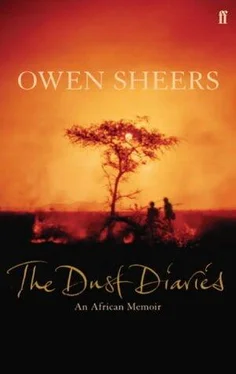
![Никки Сикс - Героиновые дневники. Год из жизни павшей рок-звезды[The Heroin Diaries - A Year in the Life of a Shattered Rock Star]](/books/78612/nikki-siks-geroinovye-dnevniki-god-iz-zhizni-pavshej-rok-zvezdy-the-heroin-diaries-a-yea-thumb.webp)
